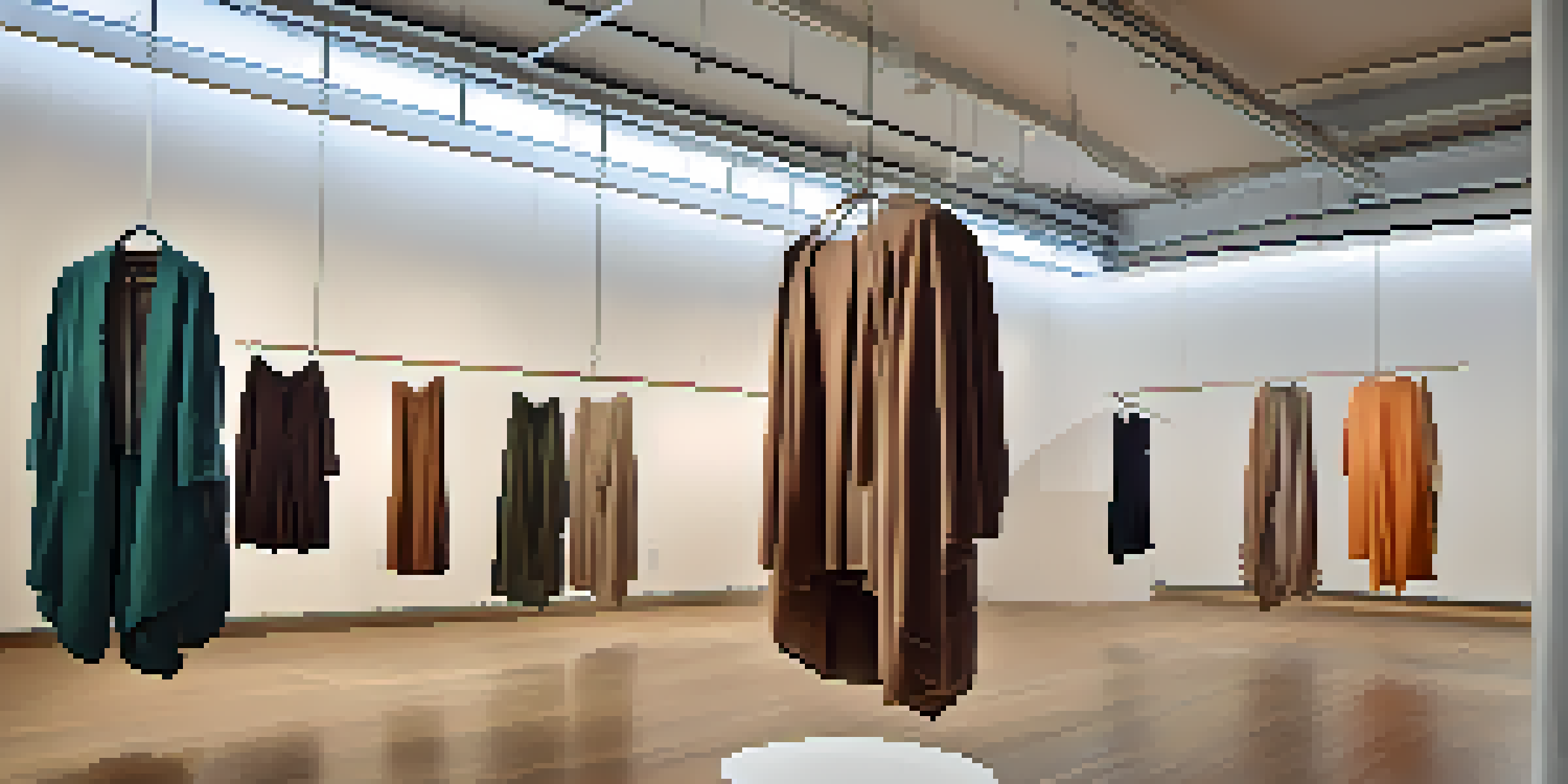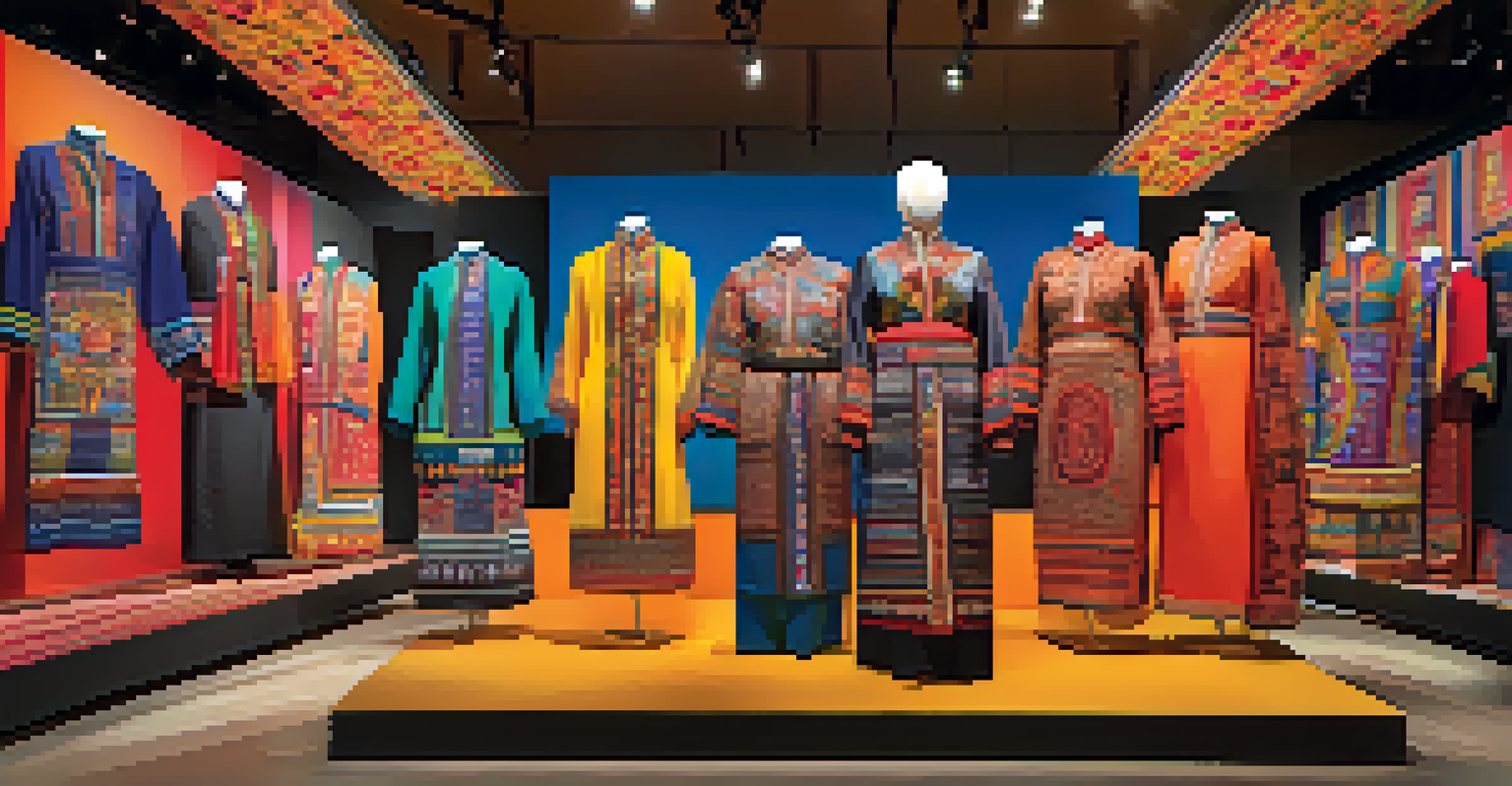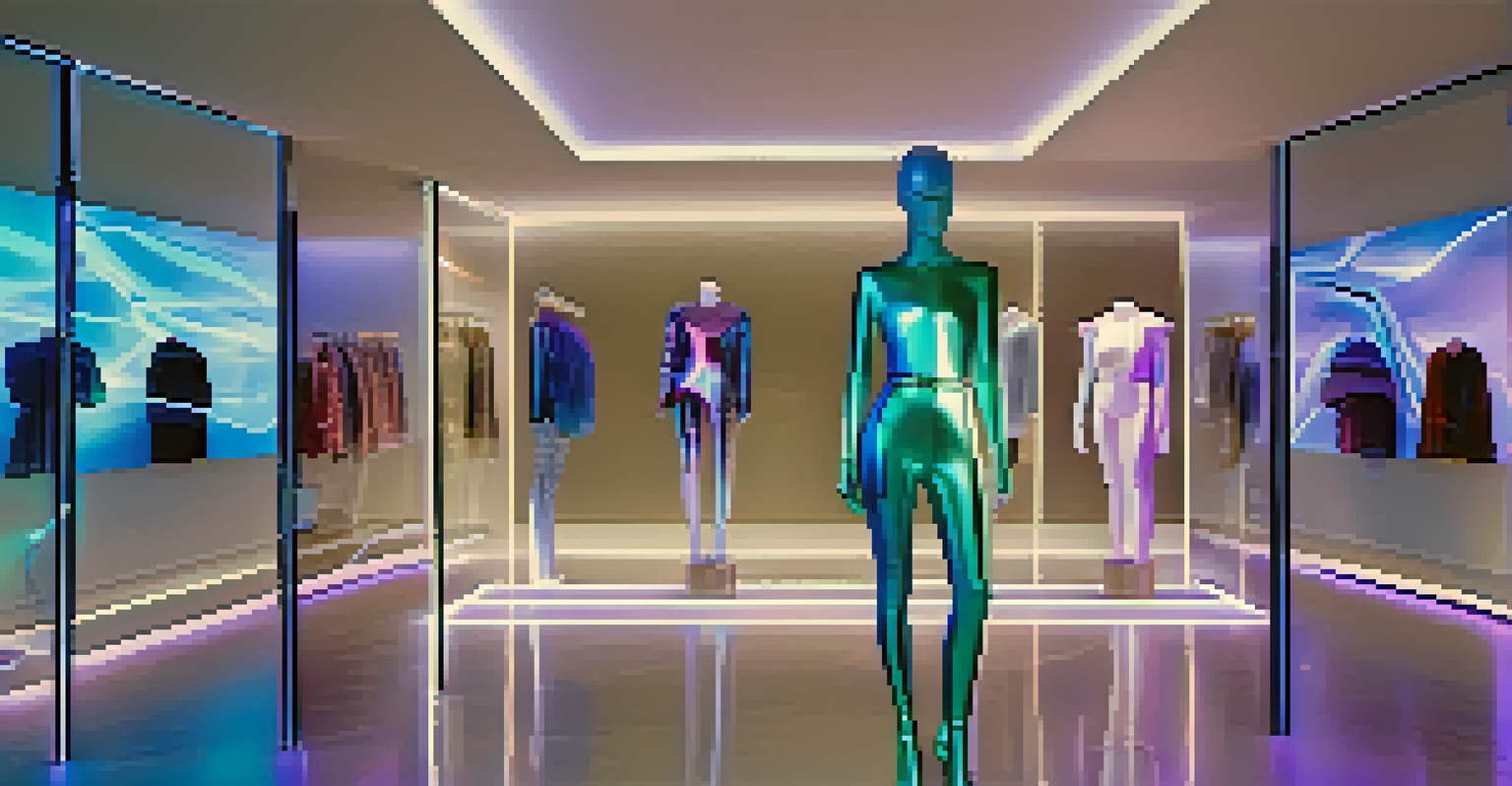Fashion’s Role in Contemporary Art Installations

The Intersection of Fashion and Art in Modern Installations
Fashion and art have long been intertwined, but in contemporary installations, this relationship has evolved into a dynamic dialogue. Artists are increasingly using clothing as a medium to explore identity, culture, and social issues. For instance, installations that feature garments can evoke deep emotional responses, encouraging viewers to reflect on their own experiences and societal norms.
Fashion is the armor to survive the reality of everyday life.
This merging of fashion and art allows creators to challenge conventional boundaries, transforming spaces into immersive experiences. A notable example is the use of garments in installations that comment on consumerism and sustainability, inviting audiences to reconsider their purchasing habits. By incorporating fashion elements, artists can make their statements more relatable and impactful.
Moreover, the visual language of fashion—colors, textures, and forms—adds layers of meaning to artistic expressions. This creates a rich tapestry of storytelling that resonates with diverse audiences, making art more accessible. As installations continue to evolve, the symbiotic relationship between fashion and art will undoubtedly pave the way for innovative expressions.
Fashion as a Medium for Social Commentary
Fashion isn't just about aesthetics; it's a powerful tool for social commentary. Many contemporary artists use clothing to critique gender roles, body image, and cultural expectations. For example, an installation featuring oversized garments might provoke discussions about societal pressures related to body size and beauty standards.

Through their work, these artists encourage viewers to engage with critical issues in a tangible way. By showcasing garments that reflect personal stories or historical contexts, they create a direct link between fashion and lived experiences. This interaction prompts audiences to question their perceptions and assumptions about identity and culture.
Fashion as Social Commentary
Contemporary artists use fashion to critique societal issues like gender roles and body image.
Ultimately, fashion serves as a mirror reflecting our society's values and contradictions. Installations that harness this power can spark vital conversations about change and awareness, making the art experience not just visual but also thought-provoking. By addressing contemporary issues through fashion, artists invite us to rethink our roles within society.
The Role of Fashion Designers in Art Installations
Fashion designers are increasingly stepping into the realm of contemporary art, blurring the lines between the two disciplines. Collaborations between artists and fashion designers can result in innovative installations that showcase both artistry and craftsmanship. For instance, a fashion designer might create a collection inspired by a specific artwork, which is then displayed in a gallery setting.
Art is not freedom from discipline, but disciplined freedom.
These partnerships allow for a cross-pollination of ideas, enhancing the creative process. When fashion designers contribute their expertise, they bring a unique perspective on form, fabric, and function, enriching the overall installation. This collaboration can lead to thought-provoking pieces that challenge viewers’ perceptions of both fashion and art.
Furthermore, these installations often draw larger audiences, as fashion enthusiasts and art lovers intersect. By merging these worlds, designers not only elevate their brand but also participate in important dialogues about art and culture. This trend exemplifies how the boundaries of creative expression are continually expanding.
Historical Context: Fashion's Journey in Art
To understand fashion's role in contemporary art installations, it's essential to consider its historical context. Fashion has been a part of artistic expression for centuries, with notable moments like the Dada and Surrealist movements challenging traditional aesthetics. Artists have long used fabric and design to comment on society, paving the way for modern interpretations.
Over the decades, the relationship between fashion and art has only grown stronger, particularly in the late 20th century. The emergence of postmodernism allowed artists to embrace irony and pastiche, often utilizing fashion as a means of critique. This historical evolution set the stage for today's installations that seamlessly integrate fashion as a vital component.
Interactive Fashion Installations
Fashion in art installations encourages audience participation, transforming the viewer experience.
By examining these historical influences, we can appreciate how today's artists are not just creating in a vacuum. They are drawing from a rich tapestry of ideas and practices that continue to shape their work, making fashion an integral part of contemporary art's narrative.
Interactive Installations: Engaging the Audience
Contemporary art installations often strive to engage audiences in interactive ways, and fashion plays a crucial role in this approach. By incorporating wearable art or participatory design elements, artists invite viewers to become part of the experience. For instance, an installation might encourage visitors to try on garments that reflect the themes of the work, creating a personal connection.
This interaction transforms the traditional gallery experience, breaking down barriers between the artwork and the audience. When participants physically engage with fashion in art, they can gain a deeper understanding of the concepts being explored. This hands-on approach not only enhances engagement but also fosters a sense of ownership over the experience.
Moreover, interactive installations often lead to memorable moments that resonate long after the visit. People are more likely to remember their feelings and thoughts when they actively participate in the art. As artists continue to innovate, the fusion of fashion and interactive elements will likely grow, making installations even more captivating.
Cultural Influence: Fashion and Identity in Art
Fashion is a powerful expression of identity, and contemporary art installations often explore this theme. Artists frequently use clothing to represent cultural backgrounds, personal narratives, and social identities, creating a visual dialogue that speaks to diverse experiences. This exploration can take many forms, from traditional garments to modern streetwear, each telling a unique story.
By showcasing fashion that reflects cultural heritage, artists highlight the importance of representation in art. This not only validates individual experiences but also fosters a greater understanding of diverse perspectives. For instance, an installation featuring traditional attire from various cultures can celebrate heritage while encouraging conversations about globalization and cultural appropriation.
Cultural Identity Through Fashion
Fashion serves as a medium for exploring and expressing diverse cultural identities in art.
Through these artistic expressions, fashion becomes a medium for storytelling, bridging gaps between communities. As viewers engage with these narratives, they are invited to reflect on their own identities and the broader cultural landscape. This intersection of fashion and identity enriches the art experience, making it relevant and relatable.
The Future of Fashion in Contemporary Art Installations
As we look toward the future, the role of fashion in contemporary art installations is poised for exciting developments. With advancements in technology, artists are experimenting with digital fashion and virtual reality, creating immersive experiences that challenge our perceptions of reality. Imagine stepping into a virtual installation where garments come alive, interacting with viewers in ways never seen before.
Furthermore, sustainability is becoming an increasingly significant theme in both fashion and art. Artists are exploring eco-friendly materials and practices, prompting discussions about the environmental impact of the fashion industry. This commitment to sustainability not only influences the aesthetics of installations but also shapes the narratives being told.

In this evolving landscape, the collaboration between fashion and art will continue to thrive, pushing boundaries and redefining creative expression. As artists embrace new mediums and address pressing social issues, the future of fashion in contemporary art will undoubtedly be as transformative as it is inspiring.